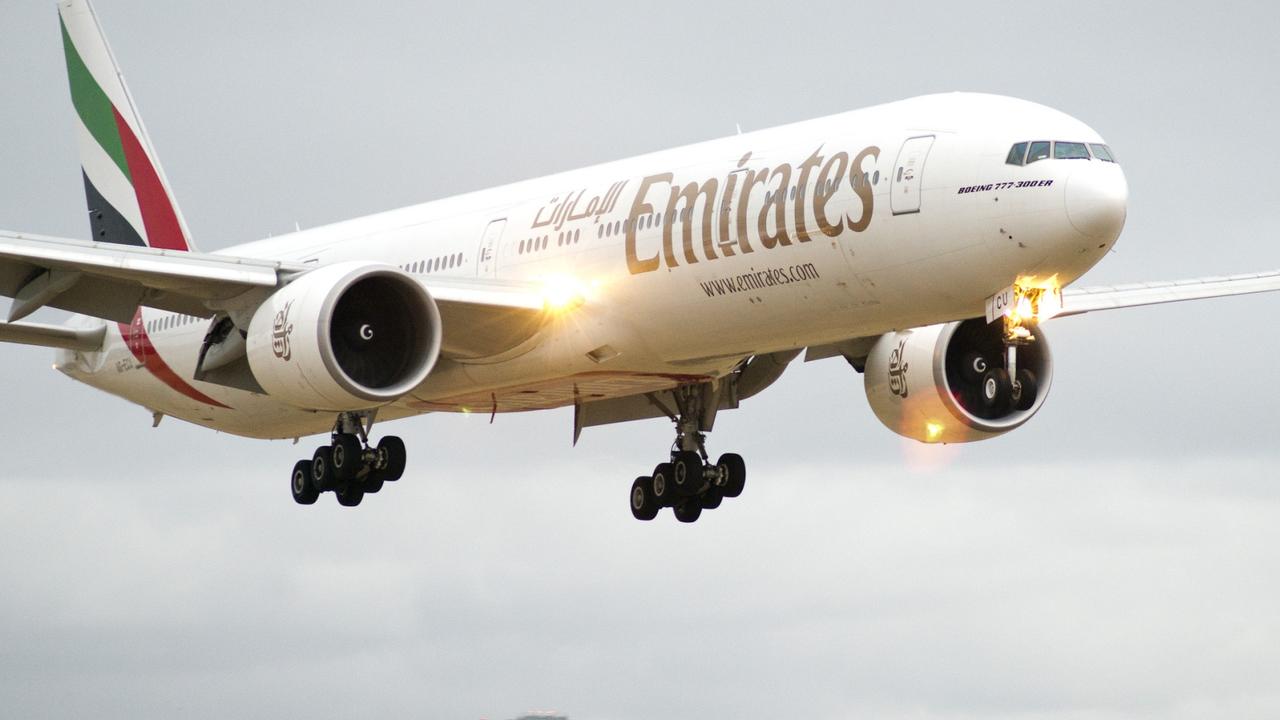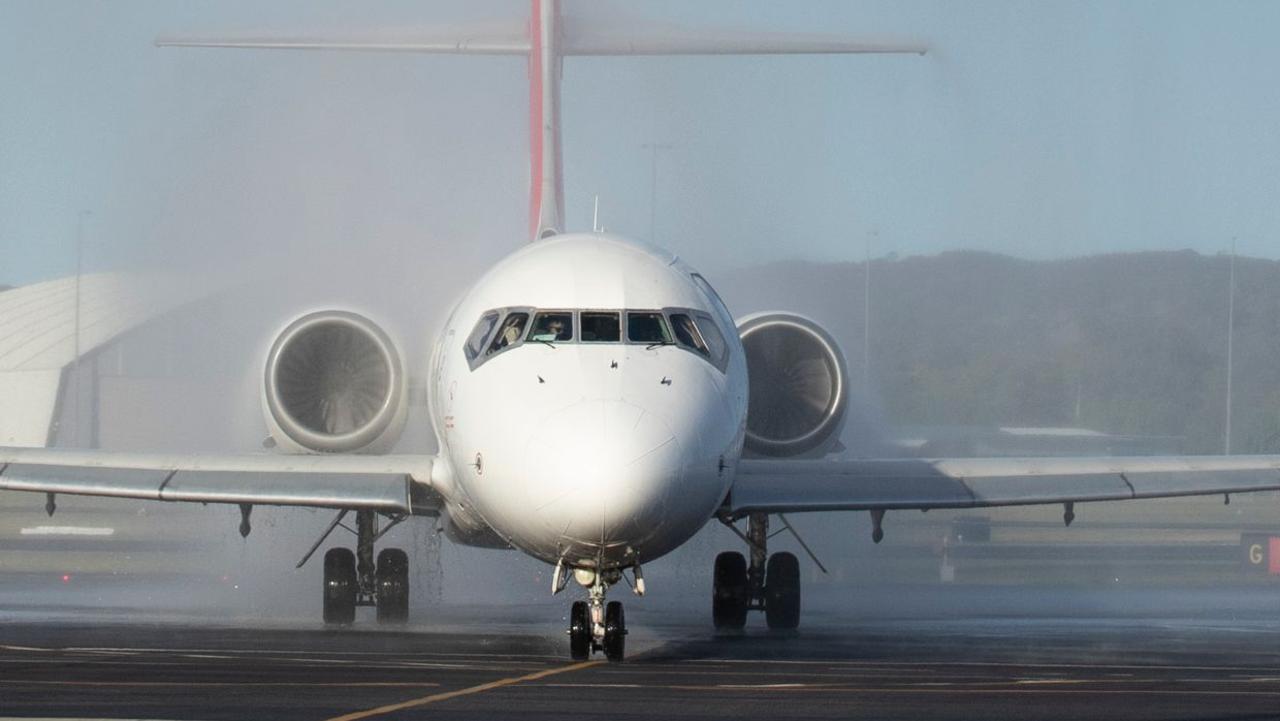Pros and cons of removing seat back screens on flights
IT COULD save airlines $4m per plane, but you won’t get cheaper flights. All you’ll get is a barrage of emails and a crook neck.
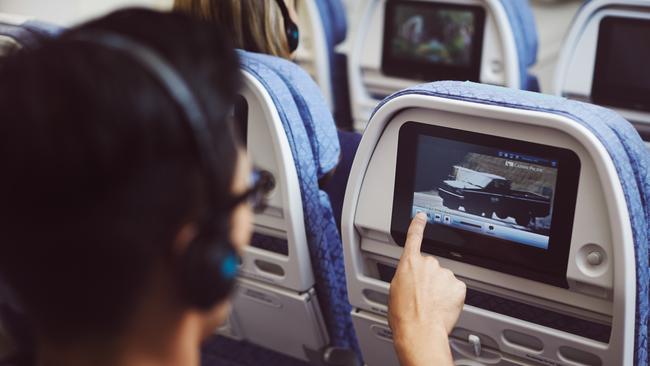
OPINION
AIRLINES are moving away from traditional seat back entertainment screens in favour of wi-fi so passengers can use their own devices.
Flight attendant Amanda Pleva was recently on a cross-country flight in the United States in which the in-flight entertainment wasn’t working.
Writing for Flyer Talk, she said normally cabin crews respond with fear when the entertainment goes down, but she was pleasantly surprised by customers’ behaviour.
“We learned of this tragedy before boarding our passengers, who were able to pick up magazines and newspapers before boarding, but the saving grace seems to be the Wi-Fi, which most people seem to be connected to on their laptops, phones or tablets. The only grumbling we heard about it was during boarding, but everyone seems pacified now and has been nothing but pleasant since then,” she wrote.
American Airlines has decided to do away with screens altogether on its new fleet of Boeing 737 aircraft, saying that “more than 90 per cent of our passengers already bring a device or screen with them when they fly”.
According to figures from the Wall Street Journal (converted to Australian dollars), in-flight entertainment systems cost almost $4 million per plane.
The weight of the cables and screens costs $118,000 in extra fuel per year for every aircraft, based on a Boeing 767 aircraft with 260 seats.
It’s a logical cost-cutting step for airlines, especially since in many cases the passengers are already doing the heavy lifting.
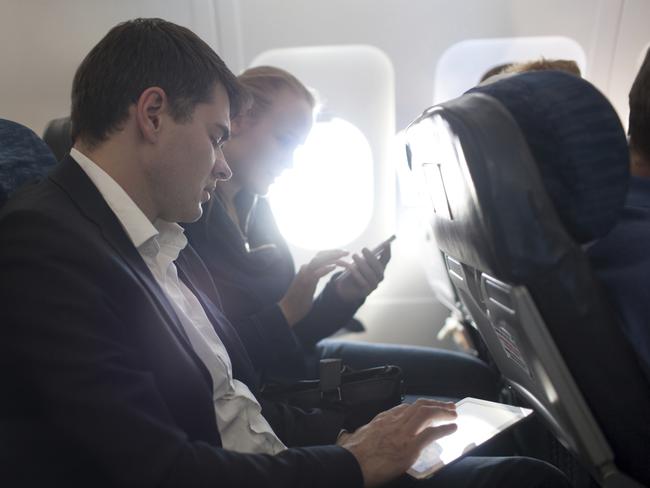
Yes, if passengers see a commensurate drop in ticket prices, it could be a good thing.
Ditching the screens will mean airlines save fuel, but the fuel prices are unlikely to fall, and neither are your ticket prices.
Yes, it’s probably a good thing that you can curate your Netflix library beforehand, tailoring your in-flight entertainment to suit your taste.
And yes, in-flight wi-fi means business travellers can stay switched on, travelling without missing a beat of what’s happening in the office or on the news.
I know I’m not the first person to say this, but is nowhere sacred?
One of the best things about flying is that you can switch off your mobile phone and disconnect from the world for a few hours.
Anyone who works in a job where you get a lot of emails can probably relate.
You won’t be drawn into a controversial comments section on Facebook, you won’t have to deal with trolls on Twitter, and you won’t be mentally draining your bank account as you lust over snaps on Instagram.
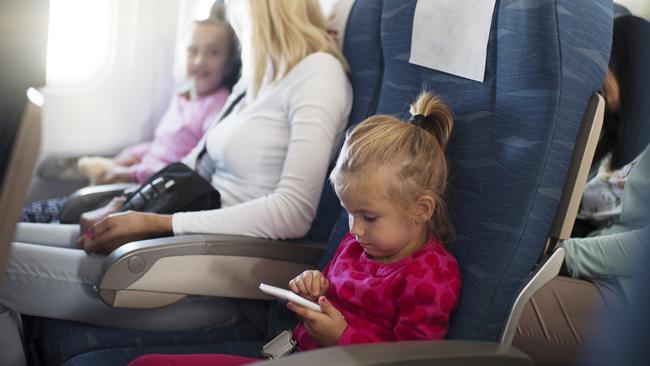
You can forget the news about the latest stabbing, the names of suburbs where you’ll never be able to afford a home, and the who’s who of Married at First Sight.
And then there’s the issue of comfort.
Passengers can survive anything on short flights between Adelaide, Melbourne, Hobart, Sydney or Brisbane. The four hours to Perth, Darwin or New Zealand are less comfortable, but still manageable.
The thing is, Australia is a really long way from everywhere else.
Seat back screens are adjustable and generally at eye level, so you can relax straight in your seat while maintaining a semi-decent level of posture.
When your arm goes numb from holding your phone to face height, you’ll have nowhere to set your phone but the tray table — and you’ll start slouching.
No-one wants to get off an eight-hour flight to Asia, a fourteen-hour flight to the US, or a 24-hour flight to Europe with dehydration AND a crook neck.
And woe betide anyone who forgets to bring a charger or download the relevant airline’s entertainment app beforehand.
As Amanda Pleva wrote, it never hurts to go low-tech and bring a book.


